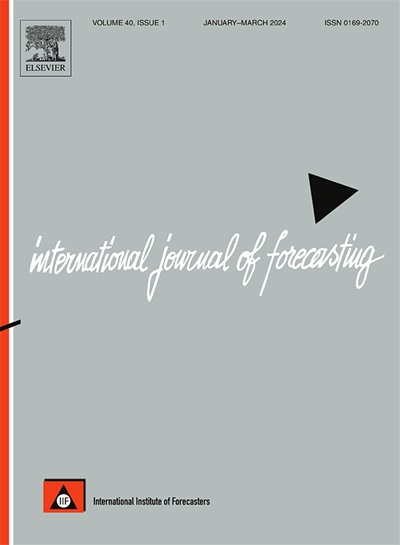Light-touch forecasting: A novel method to combine human judgment with statistical algorithms
IF 7.1
2区 经济学
Q1 ECONOMICS
引用次数: 0
Abstract
Forecast adjustments are an indispensable component of the forecasting process, but what is the most effective and efficient method to make these adjustments? Understanding how to effectively blend human forecast adjustments with statistical methods is of great importance as, even with the increased possibilities of AI, we can still not include all information available to a human planner. We address this issue by developing a method that builds on literature showing that some adjustments are consistently (in)accurate. More specifically, in two extensive case studies containing more than 3.5 million forecasting decisions, we confirm that planners are accurate in adjusting a statistical forecast in the right direction and determining the magnitude of downward adjustments, and they are inaccurate in determining the magnitude of upward adjustments. Leveraging these results, we introduce a novel method called light-touch forecasting, which attains performance levels similar to those of more traditional forecasting methods while minimizing the involvement of human planners. Furthermore, an online experiment shows an efficiency gain of 38% in terms of time spent on planning compared to traditional judgmental forecasting. We thus optimize the forecasting process by using the strengths of planners while avoiding their weaknesses.
轻触式预测:将人类判断与统计算法相结合的新方法
预测调整是预测过程中不可缺少的组成部分,但进行这些调整的最有效和最高效的方法是什么?了解如何有效地将人类预测调整与统计方法结合起来是非常重要的,因为即使人工智能的可能性增加了,我们仍然无法将所有可用的信息包含在人类规划师中。我们通过开发一种方法来解决这个问题,该方法建立在文献的基础上,表明一些调整始终是准确的。更具体地说,在两个包含超过350万个预测决策的广泛案例研究中,我们证实,规划人员在正确方向调整统计预测和确定向下调整的幅度方面是准确的,而在确定向上调整的幅度方面是不准确的。利用这些结果,我们引入了一种称为轻触式预测的新方法,该方法达到了与传统预测方法相似的性能水平,同时最大限度地减少了人类规划者的参与。此外,一项在线实验表明,与传统的判断预测相比,在计划花费的时间方面,效率提高了38%。因此,我们通过利用规划者的长处来优化预测过程,同时避免他们的弱点。
本文章由计算机程序翻译,如有差异,请以英文原文为准。
求助全文
约1分钟内获得全文
求助全文
来源期刊

International Journal of Forecasting
Multiple-
CiteScore
17.10
自引率
11.40%
发文量
189
审稿时长
77 days
期刊介绍:
The International Journal of Forecasting is a leading journal in its field that publishes high quality refereed papers. It aims to bridge the gap between theory and practice, making forecasting useful and relevant for decision and policy makers. The journal places strong emphasis on empirical studies, evaluation activities, implementation research, and improving the practice of forecasting. It welcomes various points of view and encourages debate to find solutions to field-related problems. The journal is the official publication of the International Institute of Forecasters (IIF) and is indexed in Sociological Abstracts, Journal of Economic Literature, Statistical Theory and Method Abstracts, INSPEC, Current Contents, UMI Data Courier, RePEc, Academic Journal Guide, CIS, IAOR, and Social Sciences Citation Index.
 求助内容:
求助内容: 应助结果提醒方式:
应助结果提醒方式:


